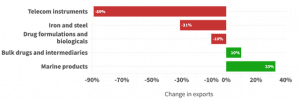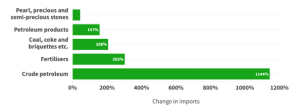A CRITICAL VIEW OF THE ‘SANITATION MIRACLE’ IN RURAL INDIA
THE CONTEXT: In the past decade, improving sanitation coverage has been one of the key public policy miracles in India. It is in line with access to water and sanitation which is Goal 6 in the 17 Sustainable Development Goals envisaged by the United Nations. However, despite various measures there are few rising concerns regarding issues in sanitation.
BACKGROUND:
- Public sanitation programmes have a long history in the country, beginning with the launch of the highly subsidised Central Rural Sanitation Programme (CRSP) in 1986.
- The Total Sanitation Campaign in 1999 marked a shift from a high subsidy regime to a low subsidy one and a demand-driven approach.
- The public sanitation programme evolved as a mission in 2014 under the Swachh Bharat Mission-Grameen (SBM-G) to make India Open Defecation Free (ODF) by October 2019.
- According to information by the Government of India, sanitation coverage in the country improved from 39% in 2014 to 100% in 2019.
- Encouraged by the achievements under the SBM, the government launched Phase II of the SBM-G. The focus here was on the sustainability of initial achievements by promoting solid and liquid waste management and covering those households left out earlier.
- The government aims to transform India from ODF to ODF Plus by 2024-25. Around 85% of villages in India have become ODF Plus, according to government data.
- Nevertheless, this impressive performance also needs to be viewed from the perspective of behavioural change, which will usher in sustainability in a true sense.
OPEN DEFECATION FREE STATUS:
- ODF: An area can be notified or declared as ODF if at any point of the day, not even a single person is found defecating in the open.
- ODF+: This status is given if at any point of the day, not a single person is found defecating and/or urinating in the open, and all community and public toilets are functional and well maintained.
- ODF++: This status is given if the area is already ODF+ and the faecal sludge/septage and sewage are safely managed and treated, with no discharging or dumping of untreated faecal sludge and sewage into the open drains, water bodies or areas.
ISSUES:
- Unused despite construction: The construction of toilets does not automatically lead to their use. A National Sample Survey Office (NSSO) survey (69th round), showed that in 2012, when 59% of rural households had no access to a toilet, 4% of individuals who had access reported not using the facility. The primary reasons for not using one were not having any superstructure (21%), the facility malfunctioning (22%), the facility being unhygienic/unclean (20%), and personal reasons (23%).
- Variations: There are variations across surveys of the percentage of households having access to toilets and their uses. The more comprehensive National Annual Rural Sanitation Survey (NARSS)- Round-3 (2019-20), conducted by the Ministry, shows that 95% of the rural population had toilet access in India. However, the same report suggests that only 85% of the rural population used safe, functional, and hygienic toilets. Assuming that the same percentage of people have toilet access as the households, the gap rises to 10% between access to toilets and their use.
- Household size: The econometric models show that along with economic conditions and education, toilet use depends on household size. The higher the household size, the greater the chances of not using the toilet. Overcrowding prevent all household members from using the same toilet. Phase II of the programme does not have any criteria mandating multiple toilets for households larger than a certain size. Neither does it have any provision for building an attached bathroom.
- Jal Jeevan Mission (JJM): The Jal Jeevan Mission (JJM) programme was launched to provide tap water to each household by 2024. Nevertheless, no relation has been observed between per capita central expenses made on the JJM and the percentage of villages declared ODF Plus across States. Neither is there any relation between the percentage of ODF Plus villages in a State and households having tap connections.
- Social norms: Social norms that act through social networks play a significant role in toilet construction and use. Examining the networks through which others influence people for their sanitation behaviour, it is observed that the size and characteristics of these networks can be different in various parts of the country.
- Socio economic issues: In one of the upper caste-dominated villages, lower castes find it difficult to make social norms acceptable and enforceable. Hence, sanitation decisions are less likely to be taken independently.
- Lack of synergy: Around 10 crore toilets were constructed between 2014 and 2019 during the initial phase of the SBM-G. There are separate programmes for each of these basic needs, but they are not well coordinated. The lack of overall planning in India has led to a lack of synergy of programmes despite high levels of expenditure in fulfilling basic needs. Uncoordinated efforts often lead to an inefficient utilisation of precious public finances.
THE WAY FORWARD:
- Collective behaviour change: The collective behavioural change in the nation needs to take place. As studies suggest that behavioural change in sanitation cannot happen independently. It is contingent upon social networks and an overall improvement of living standards, including better housing and access to basic services.
- Covering left out households: The left-out households appear substantial and need to be covered in SBM Phase II. The government should identify the shortcomings of the previous phase and cover the gaps in the present phase.
- Civil society participation: Sanitation Policies and Programs should facilitate the participation of civil society including women in the design, implementation and monitoring of local priorities in rural and urban areas.
- Effective monitoring: There is a need for strengthening of institutions for efficient monitoring and evaluation for improved accountability and implementation.
- Conduct analysis and assessment: An analysis to examine policies, governance structures, and funding is needed. An assessment is necessary for updated figures on schemes coverage and compliance in health facilities. It will form the basis for prioritising policies and mobilising resources.
THE CONCLUSION:
There have been significant improvements in public health since sanitation systems and schemes have been implemented but universal access to safely managed sanitation services remains a challenge. The government needs to identify the shortcomings in the existing programme to transform India from open defecation free to open defecation free-plus status by 2024-25.
UPSC PREVIOUS YEAR QUESTION
Q. What are the impediments in disposing the huge quantities of discarded solid waste which are continuously being generated? How do we remove safely the toxic wastes that have been accumulating in our habitable environment? (2021)
MAINS PRACTICE QUESTION
Q. Despite significant improvement in sanitation coverage in the country from 39% in 2014 to 100% in 2019, it is facing several constraints. Identify the socio economic and behavioural constraints and justify with data and figures and suggest the measures to address the shortcomings.


